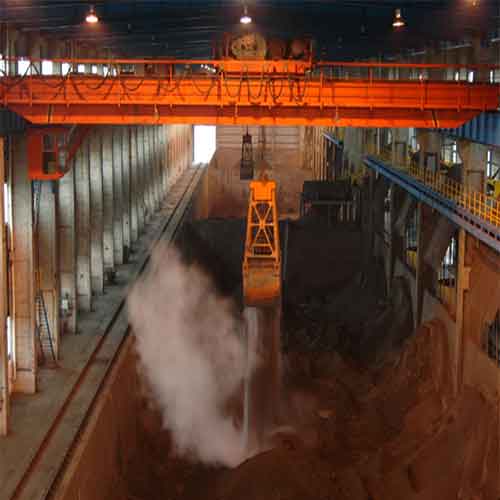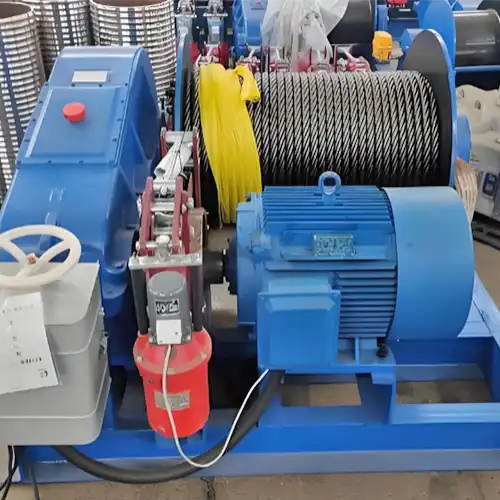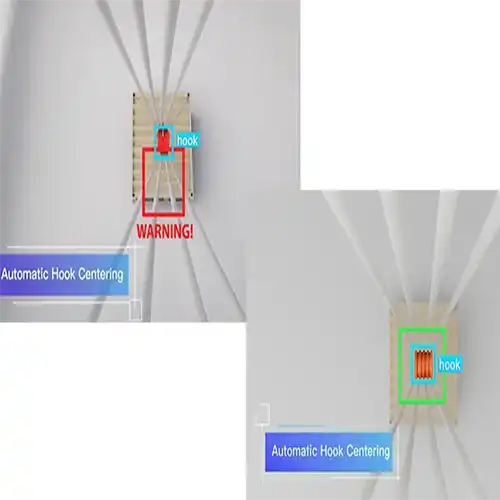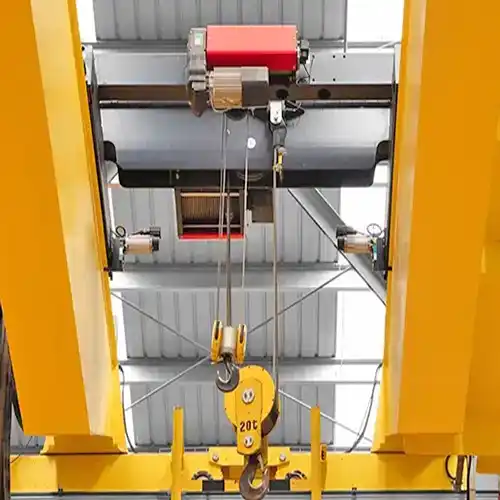Corrosion Resistance Cranes Designed for Various Industrial Uses
Corrosion resistance cranes and hoists designed for Oil & gas, Shipbuilding, Petrochemical, Infrastructure, Power generation, water & wastewater treatment,etc.
Category: Hazardous Environment Cranes
Your Trusted Overhead Travelling Crane Manufacturer & Supplier
Corrosion Resistance Cranes and Hoists for Various Industrial UseS
Processed Industrial Cranes to Prolong Crane Working Life
Corrosion Resistance Cranes and Hoists for various industrial sectors,such as, Oil & Gas , shipbuilding, petrochemical ,Infrastructure, Power generation equipment, water and wastewater treatment, etc. The corrosion resistance cranes and hoists are designed with the protection
Why do you need corrosion resistance?
It is crucial that any lifting equipment used in hazardous locations is in compliance with the relevant standards. Critical parts like load blocks, hooks, trolley wheels, load brakes, and lifting mediums like chain and wire rope should all be carefully checked to ensure mechanical spark resistance. To ensure the safety of people, equipment, and the facility itself, lifting equipment must also be corrosion resistant in addition to being spark resistant.
 Customized crane parts and component can provent your crane from rust
Customized crane parts and component can provent your crane from rust Jib crane corrosion - Need corrosion jib crane, contact us now
Jib crane corrosion - Need corrosion jib crane, contact us nowWhich industry needs the corrosion resistant hoist and crane?
Applications of corrosion resistant hoist and cranes : oil & gas industry, Shipbuilding, Petrochemical industry,Infrastructure, Power Generation Equipment, Water and Wastewater Treatment, Food industry (e.g. cheesemaking or meat processing), and others, etc.
What are the reasons to cause the corrosion ?
Harsh and corrosion weather conditions
There are many classified hazardous areas outside that expose lifting equipment to direct and often harsh weather. This includes, to name a few, offshore oil platforms, natural gas processing plants, and refineries. Equipment in offshore facilities, in particular, may be subjected to splash zones, salt spray, and the condensation of salt laden air.
Sulfur, mineral acids, and other corrosive agents
Sulfur, mineral acids, and other corrosive agents are frequently present in the crude oil and natural gas that is produced, processed, and transported in these facilities, further corroding lifting equipment used in these environments.
- Sulfide corrosion - During the operation,the hoisting crane is subjected to sulfide corrosion interference, and the sulfide in the crude oil itself accelerates mechanical corrosion . Sulfide reacts with water to produce an acidic hydrogen sulfide substance with reducing characteristics, which adheres to the lifting equipment surface and corrodes.
- Polysulfide corrosion- Polysulfides are in crane equipment. Once corrosion occurs, a variety of sulfides will be produced, causing the crane equipment to enter an unstable operating environment. The lifting equipment after polysulfide corrosion is exposed to the air, and air oxidation begins to occur, which accelerates the speed of corrosion, which is not conducive to the normal operation of the lifting equipment, and the damage to the corroded part will become more and more serious.
- Naphthenic acid corrosion - There are many cyclopropionic acid substances in petroleum. Cyclic acid is an organic acid with obvious chemical characteristics. After contact with lifting equipment, especially the mechanical equipment of iron materials, serious corrosion damage will occur. The corrosion and damage of cyclopropionic acid to the crane increases the risk of petroleum equipment, which causes the crane to be in a high risk operation process, and danger will occur at any time.
Corrosion can be extremely expensive, costing billions of dollars each year in the oil and gas industry alone. The cost of repairing and replacing corroded lifting equipment, combined with unscheduled maintenance, downtime, and lost production, can have a significant impact on these businesses' profitability. Corroded load blocks, hooks, chains, and cables can also lead to catastrophic equipment failure. This can not only cause costly damage to equipment and the facility, but it can also injure or even kill operators and other people in the facility.
So how do you protect lifting equipment from corrosion?
Use anti-corrosion materials
It is critical to use corrosion resistant materials for load blocks, hooks, chains, cables, and other components. Furthermore, because surface corrosion can increase friction between mating components, corrosion prevention is important when using these products in classified hazardous environments.
Always look for spark and corrosion resistant materials and coatings in lifting solutions. Consult with a lifting application engineer to determine which solution is best for your application and whether a custom solution is required.
When selecting raw materials for hoisting equipment manufacturing, anti corrosion properties must be considered. Polyurethane anti corrosion coating, 100% solid content, for example, which belongs to the coating with good anti corrosion performance, can stably adhere to the surface of mechanical materials, improve mechanical wear resistance, reduce the probability of corrosion. Well, it can provide anti corrosion protection in a short period of time and can be sprayed directly on the equipment surface without the problems of volatilization and combustion. It is a type of safe anti corrosion material.
Use high quality equipment
When selecting lifting equipment in the oil industry today, high quality equipment is primarily used. To meet the requirements of anti corrosion in lifting equipment, materials with anti corrosion features are used, such as selecting acid resistant and anti oxidative raw materials to maintain lifting reliability, and then solve the anti corrosion problem.
Surface corrosion resistance
The anti corrosion of the lifting equipment surface is a very important work. It is necessary to apply anti corrosion materials on the surface of each equipment. There are many types of anti corrosion materials used on the surface of equipment. In the process of mechanical practice, materials with better anti corrosion properties are selected . Commonly used surface anti corrosion materials are: environmentally friendly acid resistant anti corrosion coatings, inorganic polymer anti corrosion coatings, these materials can obviously resist acid, corrosion and other damage, and strengthen the anti corrosion characteristics of lifting. In addition, the anti corrosion coating on the hoist and crane surface also includes inorganic polymers, which are used to prevent metal oxides in petroleum crude oil and protect the operation of lifting.
Electroplating for corrosion resistance
In the lifting operation, the core of electroplating anti corrosion is to use the method of adding plating on the lifting surface to build a metal layer with anti corrosion function on the surface. When choosing an anti corrosion method of electroplating for lifting, in order to prevent corrosion interference in petroleum crude oil, the electroplated metal layer should be in contact with the surface of the machine, on the one hand to reduce the corrosion of acidic substances in the crude oil, and on the other hand to avoid corrosion during lifting. The electroplating corrosion method pays attention to the essence of crane and hoist corrosion, and fundamentally emphasizes the importance of anti corrosion, so as to create a good environment for lifting and anti corrosion.
For anti corrosion cranes, it is necessary to fully implement anti corrosion measures to improve the operating environment of the crane and prolong the service life of the crane. According to the anti corrosion requirements of lifting, reasonably arrange anti corrosion measures to solve the corrosion problem of lifting and reduce the operational burden of lifting, so as to improve the operation level and economic benefits of lifting.
Custom corrosion resistance crane designs to prolong working life
A processed industrial crane designed specifically for caustic environments will last decades longer than a standard crane and require far less maintenance and downtime.
Certain industrial cranes such as customized overhead cranes and ganry cranes must operate in corrosive and caustic environments, such as plating lines, galvanizing plants, or other open tank chemical processes. In these cases, a standard crane will suffice for a while. Maintenance is extremely expensive, and crane life is limited.
Processed crane design to combat corrosion and rust
- When exposed to caustic fumes and liquids, standard steel components rust and degrade. The corrosive effects of caustic agents can be reduced by either substituting chemical resistant materials for standard steel or applying protective coatings to the crane.
- Stainless steel wire rope can be used in place of standard wire rope. This is especially important if a) the wire rope comes into direct contact with the chemicals, and b) it hasa history of worn or frayed wire rope.
- The benefits of zinc plating the load chain of electric chain hoists are similar to those of stainless steel wire rope.
- The hook block and hook are zinc plated, which provides excellent protection, especially when the hook and hook block are splashed or submerged in caustic liquids.
The electrification of track type bridges can be improved. To prevent rust spots, the system can use galvanized or stainless steel track. If the cable trolleys rust, they will stick or jam, breaking the cables. The trolleys themselves can be made of stainless steel cable or have non rusting nylon wheels. In a caustic environment, standard bridge electrification systems require a lot of maintenance.To prevent corrosion, galvanized solid bar runway electrification or stainless steel covered bar can be used.
All steel parts that cannot be protected or replaced in other ways can be coated with an anti corrosive epoxy paint. Caustic liquids and fumes will eat through standard enamel paint and begin to corrode the crane's steel structure over time.
Steel hoist sheaves can be replaced with high tech, ultra strong, non rusting polymer sheaves. This is strongly advised if the lower hook block is splashed or submerged. Rust or pitting on sheaves drastically reduces wire rope life, and the epoxy coating is easily worn away by the wire rope's constant rubbing. This material can be found in a variety of aerospace products.
Corrosion resistance for electrical parts and components
When exposed to acidic/caustic fumes, electrical controls, electronic devices, and motors wear out faster. It is possible to keep the crane's electrics from coming into contact with the caustic chemicals.
After prolonged exposure to caustic agents, motor windings can become more fragile (less able to run hot and hard). Most fumes are prevented from entering by completely enclosed motors, but fumes will still enter. A process known as "Corrosion Resistance Treatment "adds a protective varnish directly to the motor windings, as well as chemical resistant seals at all possible entry points.
- Motors can be further protected by using stainless steel shafts and hardware. This feature, in conjunction with "Corrosion Resistant Treatment (CRT)," provides such excellent protection that the motors can be splashed with caustic agents or hosed down on a regular basis.
- Stainless steel suspension cable and non corroding plastic cable trolleys can be used in looped wire festooned bridge electrification systems.
- The control systems can be housed in NEMA 4X fiberglass or stainless steel enclosures, which are then gasketed and press latched sealed, allowing the enclosures to be submerged in chemicals while the controls remain dry and protected.
- To prevent cracks in the cable's insulation, the electrical cable across the bridge and down to the pendant can be wrapped in a chemical resistant sheathing.
Corrosion resistance crane design to combat caustic condensation
- Some parts of the crane are splashed by the caustic chemicals, or a great deal of the chemicals condense onto the crane causing rapid corrosion.
- Fumes may condense on the bottom of the solid bar runway electrification. A self closing rubber guard allows the current collectors in, but keeps the fumes out.
- The hoist body can be shielded by an epoxy coated splash guard or vapor guard. This is desirable if the hoist is subject to splashing or vapor condensation.
Corrosion resistance crane design to combat lubrication evaporation
Caustic vapors degrade the crane's lubrication, necessitating frequent lubrication (otherwise parts will seize). Fortunately, advanced materials allow for the replacement or protection of lubricated parts.
- The sheave bearings in the lower hook block can be replaced with lubricant free bronze or polymer bushings.
- To prevent vapors from reaching the grease, all wheels can be fitted with sealed bearings.
- Bridge and trolley pillow blocks with greased ball bearings can be replaced with Dodge "no lube" pillow blocks designed specifically for caustic environments. They have no moving parts and are made entirely of nonreactive materials.
- Lubrication on the hoist wire rope or chain can be coated with a variety of waxes to prevent evaporation (or entering the tanks).
What features does your crane need?
There are numerous options and choices available. Some are very cheap, while others are quite expensive, but they are frequently cost effective. Our engineers will be able to help you find the most cost effective corrosion resistance crane.
Features of Corrosion Resistant Include:
- Standard wire ropes can be replaced by stainless steel wire rope
- Panels protection class can be raised
- Brakes protection class can be raised.
- Special painting for corrosion protection of components
- Special and high corrosion resistance painting for corrosion protection of steel structure
- Solid bronze hooks, bottom blocks, and trolley wheels
- Lightweight aluminum housings
- Stainless steel load and hand chain
- Multi coat epoxy finishes
- Zinc aluminum corrosion resistant finish
- Corrosion resistant electric chain hoists are ideal for such applications.
In addition to corrosion resistant materials and finishes, proper hoist lubrication is required to avoid sparking. These precautions, when combined with a thorough inspection and preventative maintenance program that includes pre lift inspections, play a critical role in ensuring the dependability and safety of lifting equipment in these harsh environments.

Crome-plated jib crane & stainless steel jib crane for clean room

Galvanized electric chain hoist for underwater use - customized electric chain hoist

Customized corrosion resistance overhead crane for cleanroom environment-Cleanroom crane for clean room & hygiene rooms to improve your material handling efficiency and ensure the hygiene requirements.

Stainless Steel Electric Chain Hoist for Sale | Anti -corrosion - Stainless steel electric chain hoists for sale, anti- corrosion electric hoist for oil & gas field, clean room, chemical industry, farming, & sewage, etc.

Stainless Steel Lever Hoist & Aluminum Alloy Lever Hoist - Stainless steel lever hoist & aluminum alloy lever hoist, corrosion resistant, dust-proof, anti-static & anti-magnetic. Corrosion resistant chain hoist.

Low Headroom Stainless Steel Chain Hoist for Better Hook Height - Low headroom stainless steel chain hoist- low headroom chain block & low headroom trolley conbination, compact hoist design for better hook height.Click!

Stainless Steel Chain Hoist & Stainless Steel Chain Block - Stainless steel chain hoist & chain block with high safety,reliability, easy maintenance, high mechanical efficiency, light weight & easy manual handling.
Related Products

Latest project
150 Ton Overhead Crane Installation Feedback – Paraguay Case
QDX 150 ton overhead crane in action in Paraguay. Installation photos, video, and client feedback show performance, safety, and heavy-lifting efficiency.
Free consultation to Confirm Parameters & Specifications and Get
Latest Crane Price & Crane Rate.
- Types of overhead cranes : _______?
- Optional: Overhead travelling crane, goliath gantry crane,Slewing jib crane, Single girder or double girder crane,small portable crane or kbk crane, etc.
- Capacity of overhead crane: _______?
- Optional: 0.25ton, 0.5 ton, 1 ton, 2 ton, 3ton, 5 ton, 10 ton,15ton, 20ton, 25 ton, 30ton,35ton, up to 550ton, etc.
- Crane span & lifting height : _______?
- Crane travelling length : _____?
- Control of overhead crane:_______?
- Optional: pendant/ remote/cabin control
- Voltage supply of overhead crane:_____?
- Eg,: 380V50/60HZ,3Phase or others,etc.
- Application/usage of crane:_______?
- Eg,: Steel mill, ,injection mold, cement,stone, concrete,granite, general manufacturing, etc.
Just leave a message via the contact form and our hoist and crane engineer will contact you with in 24working hours.
Get In Touch






